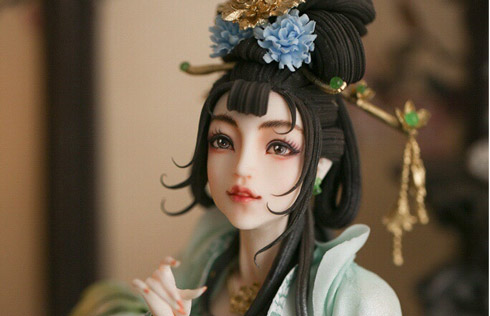Food that 'touches the heart'
|
Patrons to a yum-cha restaurant in Hong Kong browse through the newspaper while waiting for their dim-sum. |
Drinking tea and eating little snacks called dim-sum is a way of life for Cantonese. Pauline D Loh examines 'yum-cha' culture
In Chinatowns all over the world, there is inevitably a yum-cha restaurant, an exact replica of those common in Guangzhou or Hong Kong. Perhaps it is a little bit of home in a strange country to many Chinese immigrants, and it's often where they congregate and exchange news from town or village.
Busy waiters with white towels flung over their shoulders weave among the crowded tables, kettle in hand, ready to fill up the diners' teapots with hot water.
Ladies with stainless steel push carts add to the din as they call out their wares, kept piping hot in double-decker bamboo baskets on the steamers.
Prawn dumplings wrapped in snowy-white translucent skins, pork dumplings topped with a smidgen of crab roe, crisp fried wantons decorated with drizzles of sweet-sour sauce, soft white buns hiding a sweet and salty filling of barbecued pork - these are only the basic offerings in a dim-sum restaurant.
More exotic platters may include salt-and-pepper squid tentacles, chicken feet braised in a black bean and garlic sauce, and pork ribs steamed with salty plums and chili.

There are also the dishes that are served up by the table like the salted pork and century egg congee, or the radish cake that is fried with each order and served straight from the frying pan with a saucer of chili sauce.
While the younger diners crane their necks waiting for the next cart and its goodies, more sedate older members of the family will pour tea for each other and enjoy their little cups of the fragrant beverage. The more dedicated drinkers may even bring along their personal urn of tea leaves.
There is much ritual with the pouring and serving of tea. When a senior person serves tea, the more junior recipient should crook his fingers and tap the table twice. This is one way of saying "thank you" and there is a tale behind the gesture.
The story goes that the Qing Dynasty (1644-1911) emperor Qianlong used to travel disguised as a merchant or a scholar, and he would pour tea for his bodyguards at the table. Since he was traveling incognito, his officials could not acknowledge the honor by kneeling. Instead, they had to let their fingers do the talking.
In a noisy crowded restaurant, diners waiting for a refill of their teapot may find it hard to attract the attention of servers. Instead, they tilt the lids of their teapots as a signal to any passing waiter that more hot water is needed.
The tea drinking is so much part of this meal that even the restaurants are named after the ritual, hence you have "yum-cha restaurants" - "yum cha" meaning "drink tea" in Cantonese.
Dim-sum or dian xin is a collective noun for all the little snacks and platters. Literally, the two characters mean "to touch the heart", which, I think, aptly describes the making of these little snacks.
The ingredients are nothing unusual. Dumpling skins, bun dough, minced pork, minced prawns, fish paste, mushrooms and maybe water chestnuts and bamboo shoots are all part of the mise en place.
But it is the skilled hands of the dian xin chefs that create totally different snacks that look and taste different. That is the heartfelt art of dim sum making. A good dian xin chef may have a repertoire of several hundred snacks, all prepared with the freshest of seasonal ingredients.
Steamed dumplings, for example, may come in all shapes and sizes, some shaped like a goldfish, others with bunny ears, or even some looking like little hedgehogs - depending on the dexterity of the chef's hands.
The most famous dumplings are the shrimp dumplings, called har gow, which are shaped like fat ingots, and the little round open-topped pork dumplings called siew mai (shao mai). The first is made with pounded shrimp paste, chopped shrimps and shredded bamboo shoots. The skin is made with a gluten-less dough, which gives it a transparency through which the pink prawns glow.
Siew mai is minced pork with water chestnuts and spring onions wrapped in a yellow skin and pinched into little barrel-shaped dumplings. The more luxurious versions often have crab meat and a topping of crab roe. These days, however, many chefs substitute the crab roe with Japanese flying fish roe or tobiko.
Here is my version of the ubiquitous siew mai and its variations. All you have to do is to prepare a basic minced meat filling. After that, let your imagination take rein.























